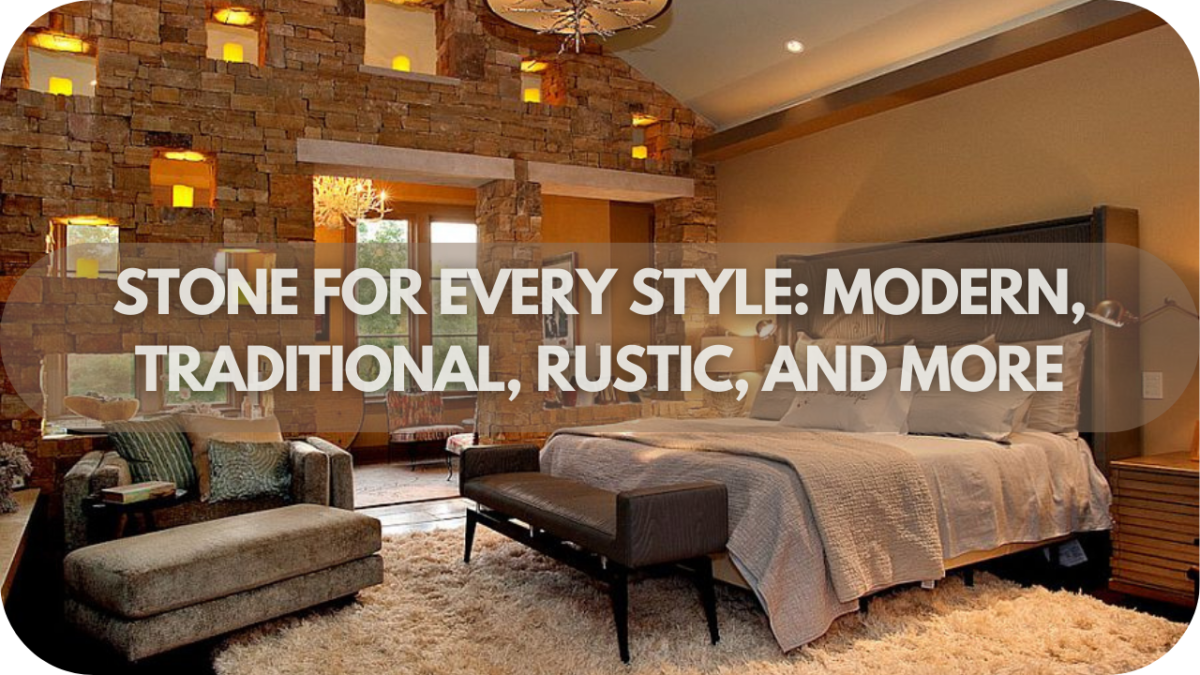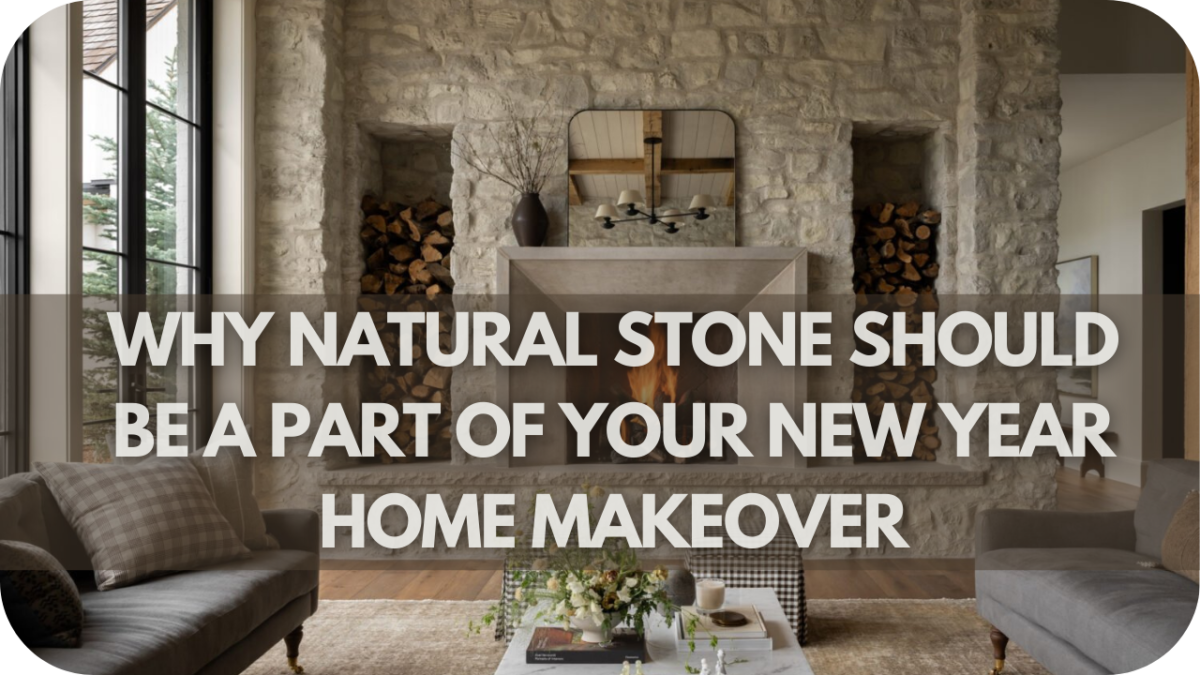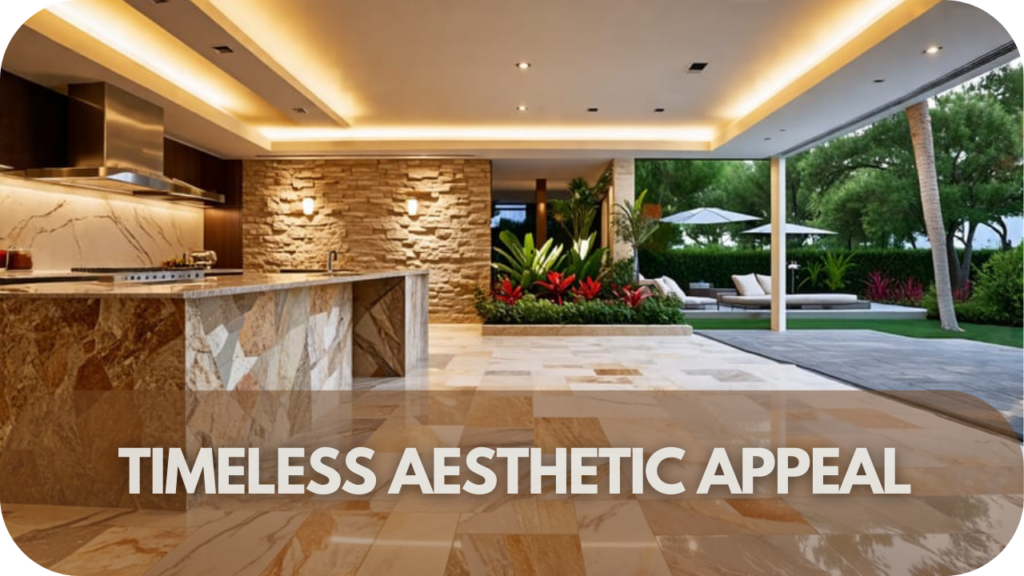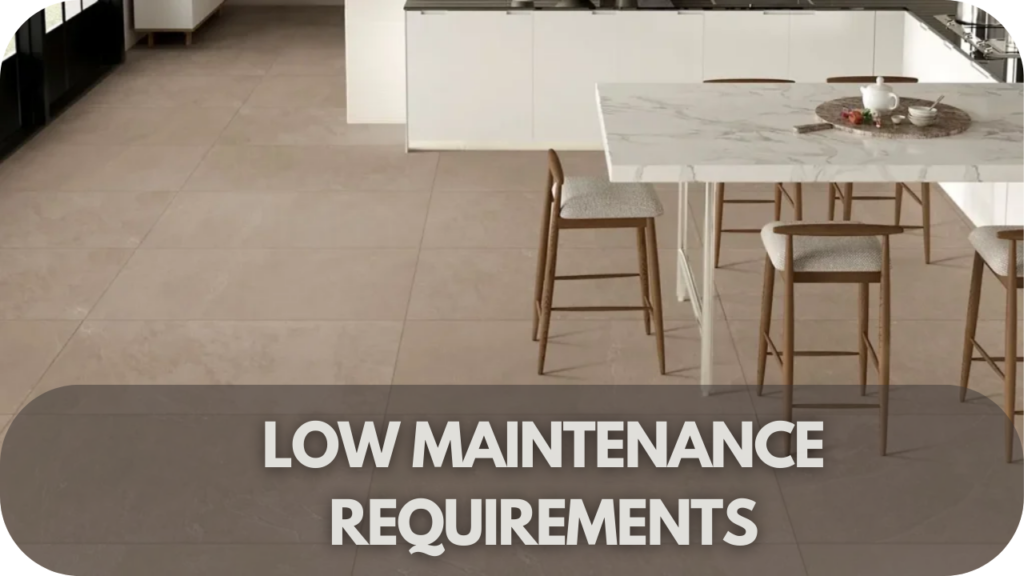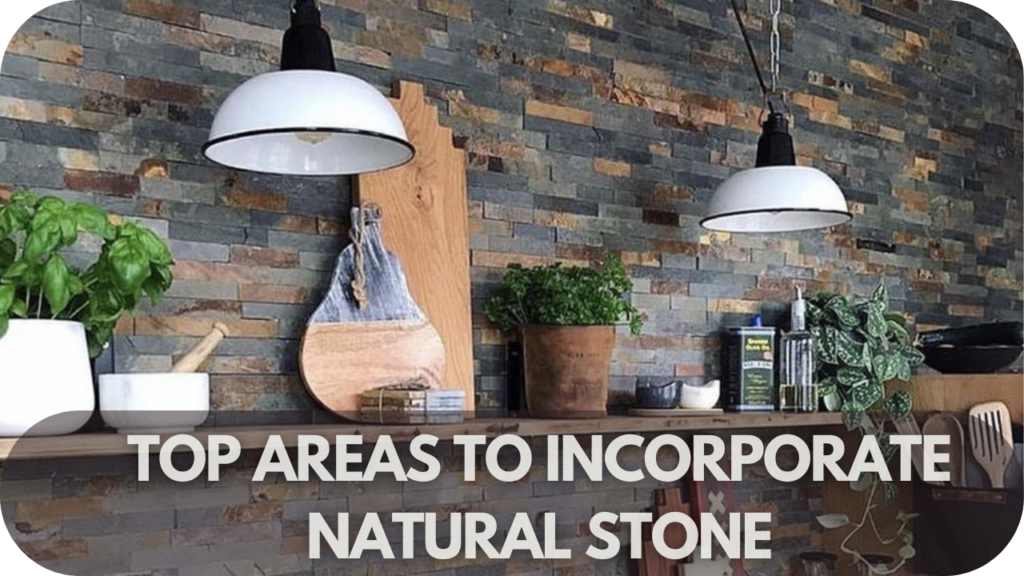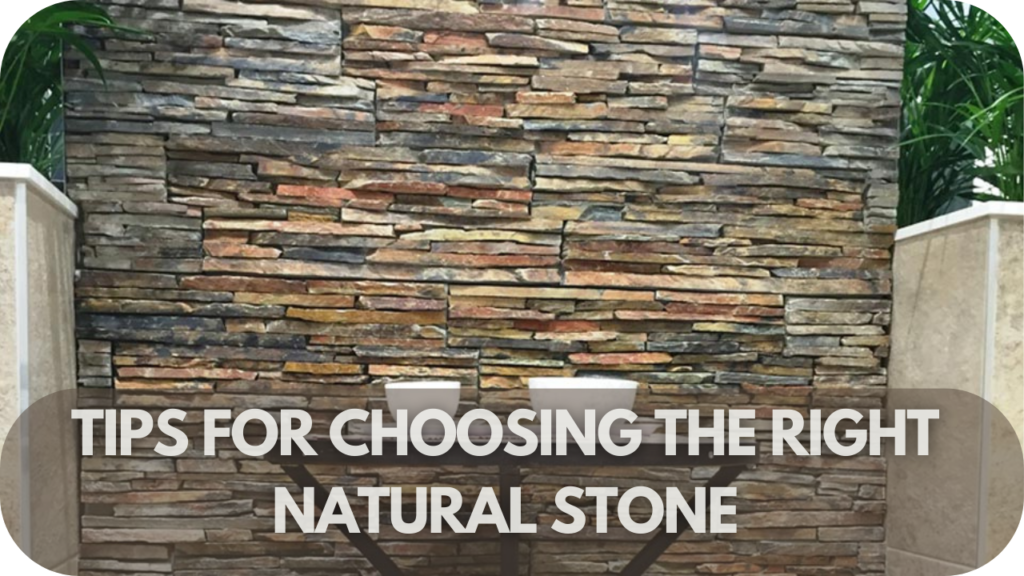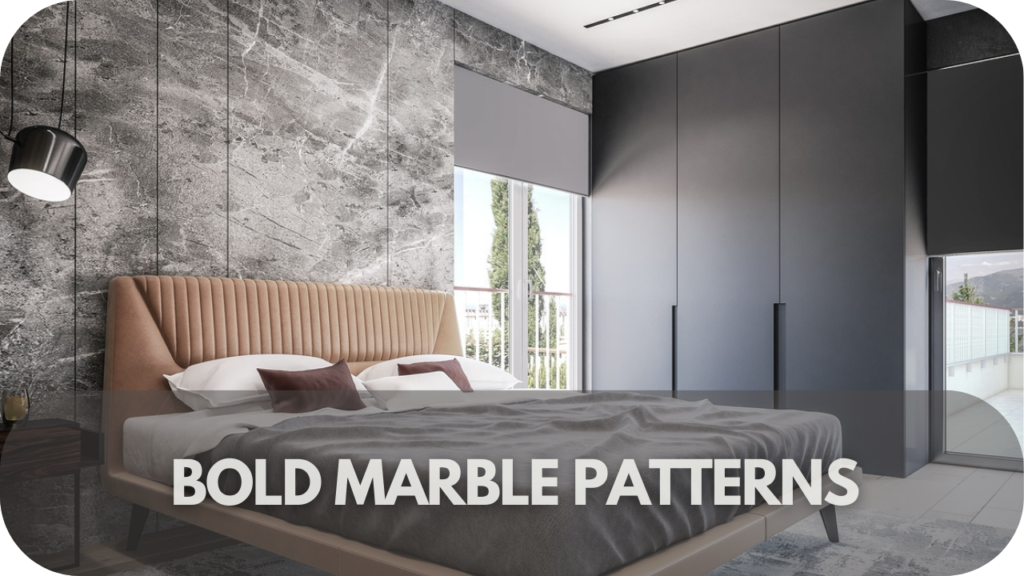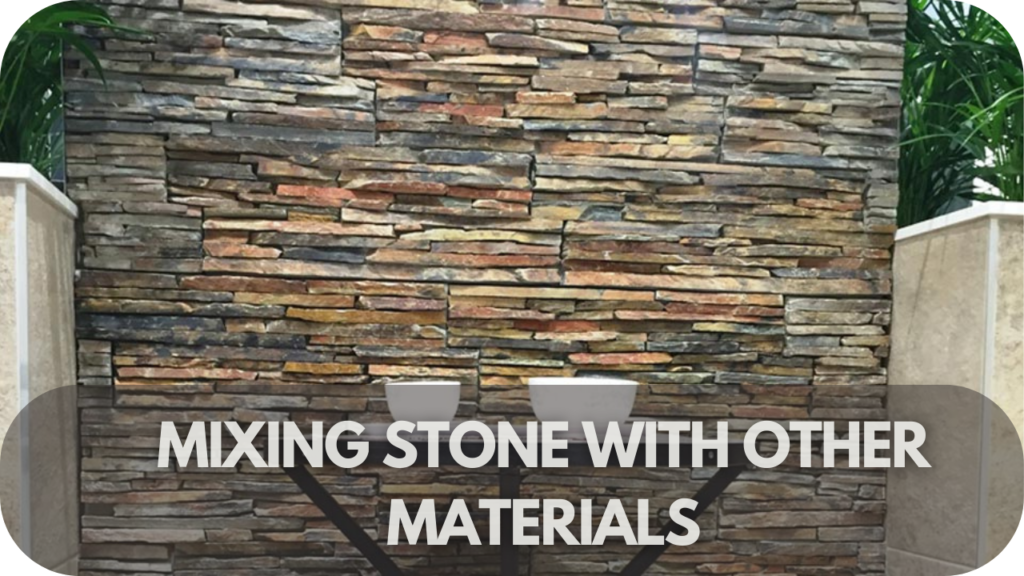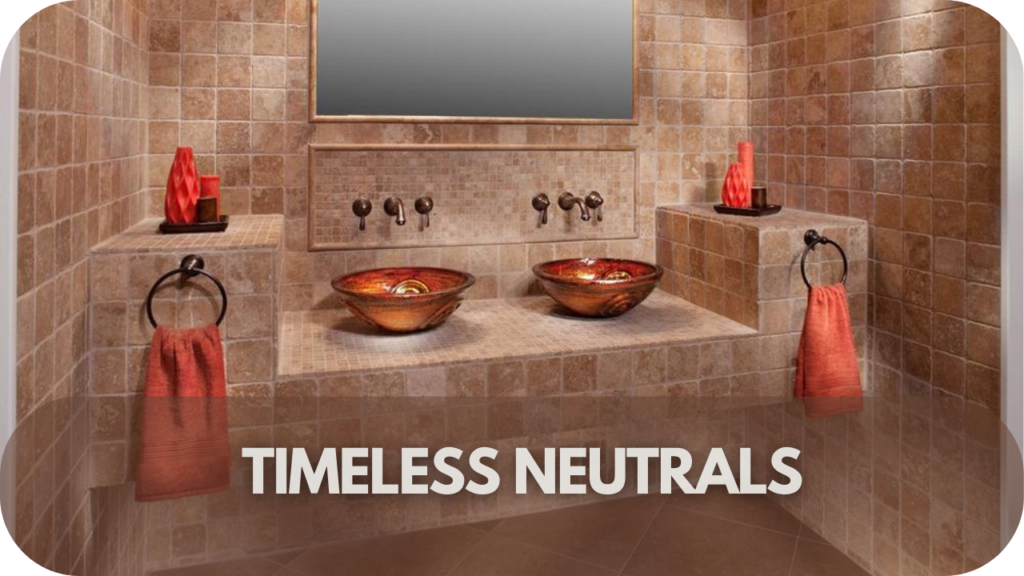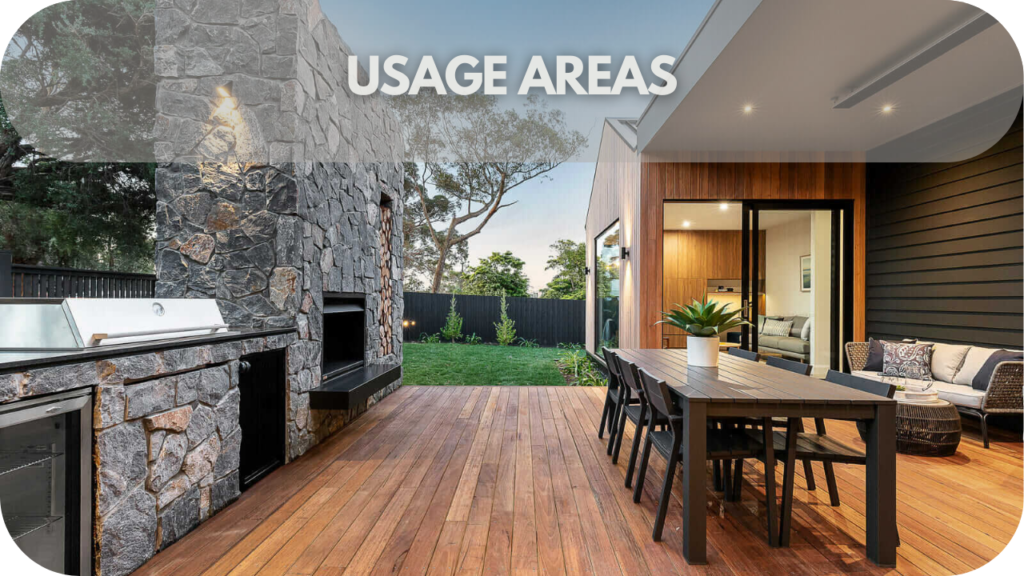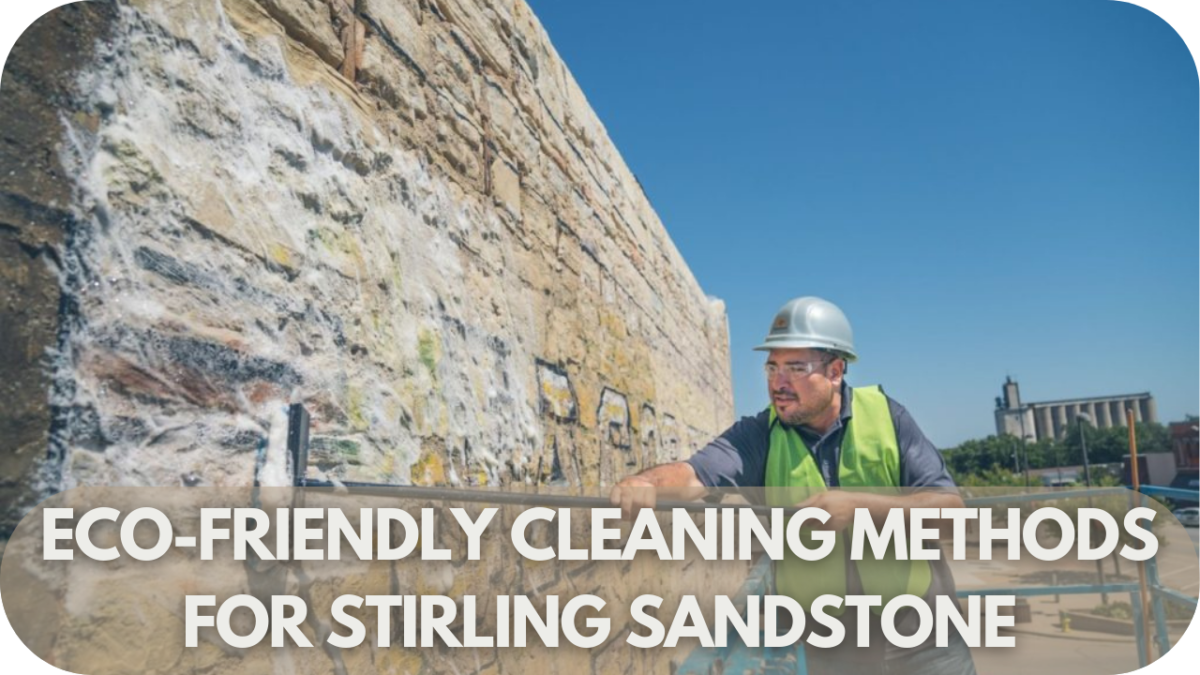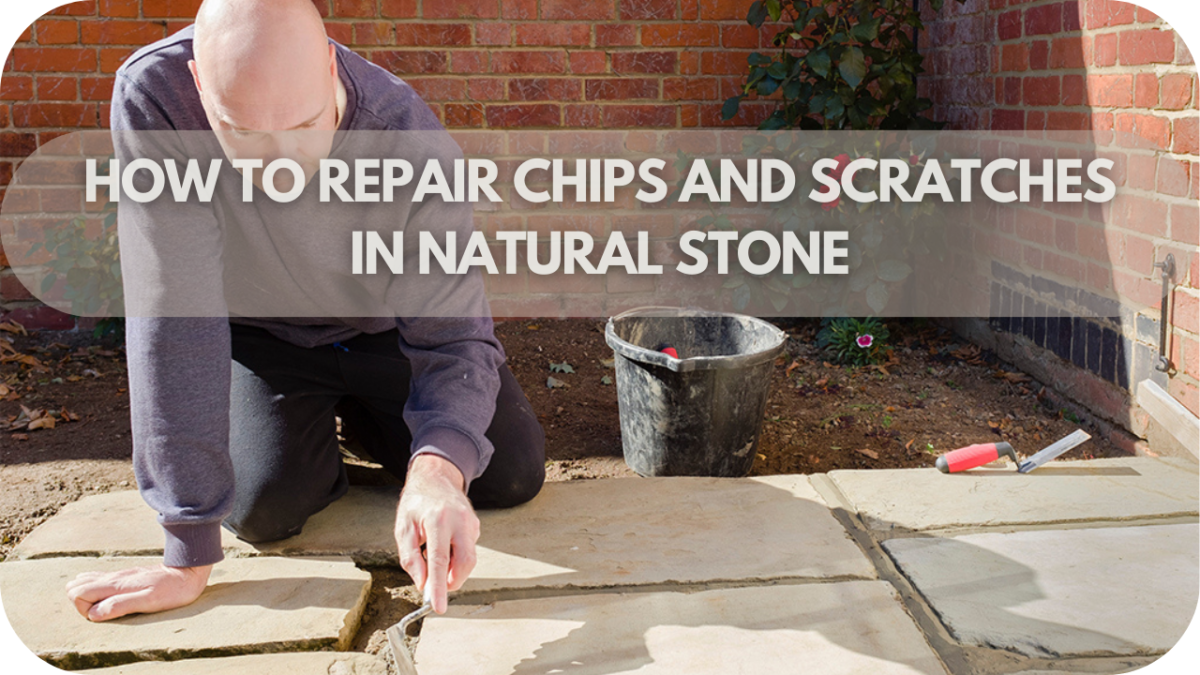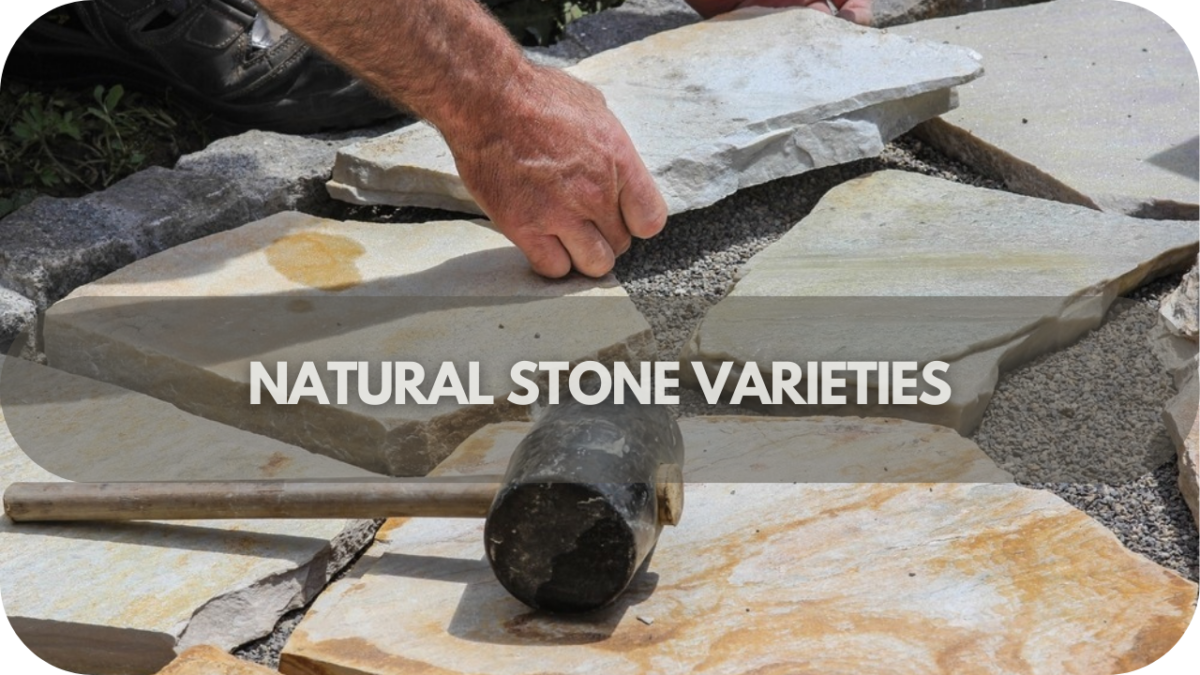Stone for Every Style: Modern, Traditional, Rustic, and More
Stone is more than just a building material; it’s a statement of style, durability, and elegance. From sleek and minimalist interiors to cosy rustic spaces, the right stone transforms a house into a home that reflects personality and taste.
Whether you prefer the clean lines of modern design, the charm of traditional décor, or the warmth of rustic elements, there’s a stone that fits every aesthetic. Let’s get started!
Modern Style: Sleek Stones for Contemporary Spaces
Modern design emphasises clean lines, minimalism, and functionality. Polished stones such as granite, quartzite, and marble are pivotal in achieving this aesthetic, blending practicality with sophistication. Let’s delve into how each stone elevates contemporary spaces.
1. Granite: Durable and Versatile
Granite remains one of the most sought-after stones for modern interiors due to its unmatched durability and low upkeep. This igneous rock offers natural patterns and speckles that introduce understated charm to minimalist spaces.
Its neutral palette, ranging from deep blacks to light greys and crisp whites, complements modern furnishings and metallic accents effortlessly. Granite’s heat and scratch resistance make it an excellent choice for kitchen countertops, maintaining both form and function.
In addition to countertops, granite excels as polished flooring, where its reflective surface enhances natural light and adds a sense of spaciousness to living areas.
Outdoor spaces also benefit from granite’s robust nature; it withstands harsh weather, making it perfect for patios or garden paths. By pairing granite with sleek cabinetry and understated lighting, you create a cohesive, contemporary look.
2. Quartzite: Sleek and Resilient

Quartzite is a versatile natural stone that seamlessly blends elegance and functionality, making it ideal for modern spaces. Its aesthetic appeal lies in its marble-like appearance, featuring subtle veining and neutral tones that harmonise with contemporary designs.
Quartzite is especially valued in areas prone to moisture, such as bathrooms and kitchens, where its superior water resistance outperforms many other materials.
Shower walls and vanity tops made of quartzite not only look crisp and clean but also stand the test of time. Available in shades of white, grey, or even soft pastels, quartzite complements minimalist colour schemes effortlessly.
Its durability allows it to endure daily wear, while its polished or honed finishes enhance its modern appeal. Paired with chrome fixtures or geometric patterns, quartzite elevates any space to a sophisticated level.
3. Marble: Luxurious and Timeless
Few materials rival marble’s timeless beauty and ability to exude luxury. With its iconic veining and polished surface, marble has become a staple in modern design.
Whether used for kitchen islands, backsplashes, or accent walls, it creates a striking focal point. White marble varieties such as Carrara and Calacatta are especially prized for their subtle grey veining and ability to brighten spaces.
While undeniably elegant, marble requires mindful care. Its porous nature makes it prone to staining, but protective sealants or honed finishes can reduce maintenance concerns. Marble works wonderfully as a backdrop for bold metallic accents, dark wood furniture, or minimalist lighting.
Its reflective qualities enhance natural light, creating a bright and inviting environment. In modern interiors, marble is more than material—it’s a symbol of refined taste and timeless style.
Traditional Style: Classic Stones That Never Go Out of Fashion

Traditional design is synonymous with timeless elegance, where intricate details and warm tones create inviting spaces. Stones like limestone and travertine embody these qualities, enhancing traditional interiors with their enduring charm.
1. Limestone: Understated Elegance
Limestone’s natural beauty lies in its soft, neutral tones and subtle textures, making it a timeless choice for traditional interiors. Its versatility allows it to complement ornate furnishings, intricate mouldings, and classic architectural details without overwhelming the design.
Applications such as fireplace surrounds, grand entryways and decorative columns showcase limestone’s ability to blend seamlessly into elegant spaces.
Polished limestone flooring is a popular choice for formal dining rooms and hallways, where its smooth surface adds sophistication and reflects natural light. In more casual areas, tumbled limestone finishes lend a softer, more lived-in feel, perfect for creating warmth and comfort.
When paired with antique furniture and traditional décor, limestone serves as a neutral backdrop that enhances the overall charm of a space. Its durability and timeless appeal make it a favourite for those seeking understated elegance.
2. Travertine: Warm and Welcoming
Travertine’s warm, earthy tones and distinctive patterns bring a sense of character and sophistication to traditional interiors. Its natural pitting and veining create visual interest, making each piece unique.
Travertine is particularly popular in flooring and wall cladding, where its ability to blend with rich wooden furniture and classic design elements shines. A polished travertine floor in a grand hallway can elevate the space, adding a luxurious yet inviting touch.
For a softer, more antique aesthetic, honed or tumbled finishes are ideal. These finishes accentuate the travertine’s rustic qualities, creating a warm and welcoming atmosphere. Travertine pairs beautifully with ornate lighting fixtures, traditional rugs, and detailed woodwork, making it a versatile material for spaces where cohesion and charm are paramount.
Rustic Style: Raw and Natural Stones for a Cosy Ambience

The rustic design embraces the beauty of imperfection, using natural materials to create warm, lived-in spaces. Stones such as slate and fieldstone perfectly capture this aesthetic with their rugged textures and earthy tones.
1. Slate: Textured and Durable
Slate is a robust and visually striking stone that perfectly complements rustic designs with its rich palette of greys, blacks, and earthy rust tones. Its naturally cleft surface introduces a tactile quality that adds depth and character to any space. Slate is highly durable, making it an excellent choice for areas that experience heavy foot traffic, such as floors, patios, and hallways.
Slate flooring pairs seamlessly with exposed wooden beams, stone hearths, and textured fabrics, enhancing the cosy and natural feel of rustic interiors. Its slip-resistant nature also makes it ideal for outdoor applications like garden paths and poolside areas.
Because of its ability to resist wear and tear, slate is a long-lasting option for both indoor and outdoor designs. When paired with warm lighting, slate transforms spaces into havens of comfort and style.
2. Fieldstone: Natural and Timeless
Fieldstone embodies the essence of rustic charm with its raw, uneven shapes and natural earthy hues. Its rugged appearance makes it a popular choice for creating authentic, inviting interiors. Fieldstone fireplaces serve as stunning focal points, radiating warmth and character in living rooms or open-plan spaces.
Accent walls constructed with fieldstone bring texture and depth, making them ideal for creating a grounded, natural atmosphere. Whether indoors or outdoors, this stone connects the space to its surrounding environment, adding a harmonious flow.
Fieldstone’s versatility also extends to garden walls and outdoor seating areas, enhancing the rustic appeal of patios and landscapes. Paired with elements like weathered wood and soft textiles, fieldstone helps craft spaces that feel both timeless and uniquely personal.
Versatile Stones for Blending Styles

When combining design aesthetics, stones like sandstone and bluestone offer unmatched adaptability, effortlessly transitioning between modern, traditional, and rustic styles.
1. Sandstone: Neutral and Adaptable
Sandstone’s soft, earthy tones and fine grain make it a versatile option that works well in both contemporary and classic interiors. Its warm hues, ranging from beige to light gold, serve as a neutral backdrop, allowing it to blend seamlessly with various design styles.
Sandstone is especially popular for flooring, feature walls, and outdoor landscaping, creating a cohesive flow between indoor and outdoor areas.
Its adaptability makes it a practical choice for patios, living rooms, or even garden paths. Sandstone’s durability ensures it stands up to daily wear, while its natural texture adds a subtle, timeless elegance to any space.
When used in transitional spaces, such as verandas or entryways, sandstone provides a smooth connection between different design elements. Paired with soft furnishings or bold accents, sandstone helps create a balanced and inviting atmosphere.
2. Bluestone: Cool and Contemporary
Bluestone is renowned for its deep grey and blue tones, making it a sophisticated choice for spaces that blend modern and rustic design. Its durability and versatility make it a favourite for outdoor applications like patios, pathways, and garden steps.
In open-plan designs, bluestone creates a seamless connection between indoor and outdoor areas, enhancing the flow of the overall space.
Its smooth finish and refined texture allow bluestone to transition effortlessly into sleek indoor flooring, adding a contemporary edge to kitchens, living rooms, or hallways. The stone’s ability to withstand harsh weather conditions also makes it an excellent choice for external cladding or poolside areas.
Bluestone works beautifully with neutral colour palettes and natural materials, such as timber and metal, creating a cohesive yet striking aesthetic. Whether indoors or out, bluestone adds a sense of sophistication and harmony to any space.
Factors to Consider When Choosing Stone for Your Style

Choosing the right stone involves more than aesthetic preferences. Practical considerations such as durability, maintenance, and budget play a critical role in ensuring your investment lasts. Here are additional factors to help guide your decision:
- Durability: Select stones like granite or quartzite for high-traffic areas, while softer stones like limestone suit decorative applications.
- Maintenance: Polished stones such as marble may require sealing to prevent stains, whereas rougher finishes like slate are more forgiving.
- Budget: Stone types vary widely in cost; balance your design goals with your financial plan. Travertine and sandstone are budget-friendly yet stylish options, while marble and quartzite may require a higher investment.
- Colour and Texture: Neutral tones offer versatility, while bold colours and textures create statement pieces. Choose finishes that align with the overall feel of your space, whether polished for modern or tumbled for rustic designs.
- Environmental Impact: Consider the sourcing of the stone to ensure it aligns with sustainability goals. Locally sourced stones reduce transportation emissions, while recycled stone options are eco-friendly.
- Climate Suitability: Match the stone to the local climate for durability. For instance, granite and bluestone withstand freezing temperatures, making them ideal for outdoor use, while softer stones like sandstone may be better suited to milder climates.
- Application-Specific Features: Certain stones are better suited for specific applications. Quartzite and granite excel in areas exposed to moisture, such as bathrooms and kitchens, due to their resistance to water damage. Softer stones, like limestone, are better suited for decorative wall features or low-traffic areas.
Conclusion
Stone is more than a material; it’s a tool to shape spaces that reflect your style and personality. Whether it’s the sleek lines of granite in modern interiors, the timeless elegance of travertine in traditional settings, or the rugged charm of slate in rustic designs, stone has the power to transform your home.
Ready to create a space that feels uniquely yours? Contact our experts today for tailored guidance on choosing the perfect stone for your style.

